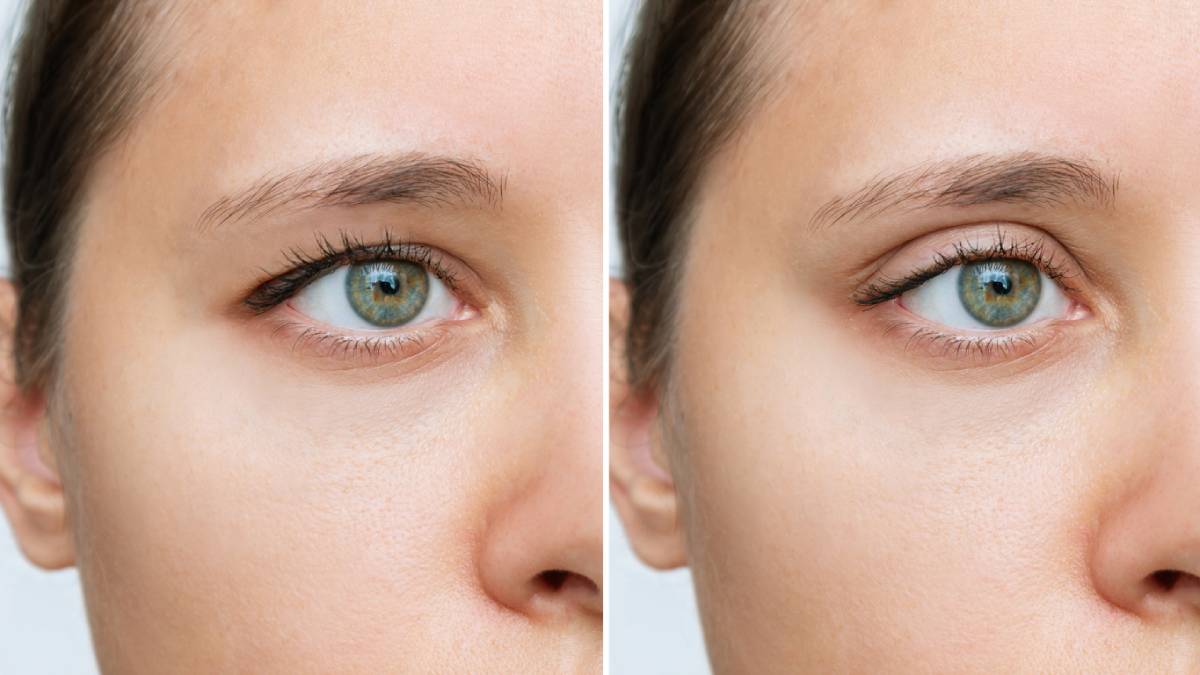Eyelid surgery, also known as blepharoplasty, is a powerful and transformative procedure that can significantly enhance your appearance and boost your self-confidence. Before undergoing any surgical procedure, proper preparation is essential for achieving optimal results. An oculoplastic surgeon can help you understand how to prepare for eyelid surgery, from pre-operative assessments to post-operative care. Having this knowledge is crucial for ensuring a smooth experience and minimizing complications. Keep reading to learn valuable insights into the necessary steps you should take before undergoing lower eyelid surgery, including consultations with your surgeon, managing medications, and setting realistic expectations.
What Is Eyelid Surgery?
Eyelid surgery is a procedure that addresses excess skin and fat in the area around the eyes. In severe cases, sagging skin can cause vision impairment, and the surgery is considered medically necessary. More often, though, the surgery is for cosmetic purposes and addresses the sagging and drooping associated with aging, offering you the chance to turn back the hands of time on your appearance.
Why People Choose Eyelid Surgery
There are several reasons people choose to undergo eyelid surgery, but the most common is that they are seeking a way to slow the visible signs of aging on their face. Over time, a person’s skin loses elasticity and buoyancy, resulting in facial skin that droops and sags. This can be bothersome to some, so the world of cosmetic surgery has developed a solution to address this effect around the eye area.
Types of Eyelid Surgery
The most common types of eyelid surgery are upper and lower. Double eyelid surgery is also available for those with monolids.
Upper Eyelid Surgery
Upper eyelid surgery targets the upper eyelid area. Your surgeon will remove a section of the skin between the upper eyelid and the eyebrow and then connect the previously unconnected parts to create a more lifted eyelid. Your surgeon will reposition the skin and fat to achieve a natural-looking result.
Lower Eyelid Surgery
Lower eyelid surgery focuses on the lower eyelid area to address sagging skin beneath the eyes. During this procedure, the surgeon removes excess skin, fat, and tissue from below the eyes to clear their puffiness. This procedure has the incredible benefit of making patients look younger and less tired.
Double Eyelid Surgery
Double eyelid surgery focuses on the upper eyelid, but rather than solely lifting the eyelid from its drooped position, it creates a crease where there previously was none. This surgery allows patients with a monolid to have a double eyelid, hence the name of the surgery. The procedure is also known by the name Asian Eyelid Surgery, though that title is somewhat outdated.
Pre-operative Preparations
Before your blepharoplasty is scheduled, you will consult with your surgeon to discuss:
- To begin, your physician will review your previous medical history and discuss any relevant surgeries with you. Be sure to tell your care team about any pre-existing conditions you have. It is essential that you are honest throughout this process, as withholding information could result in devastating consequences. You will be asked about any medications, herbal supplements, or substances you may use.
- You will also talk about and determine your goals regarding this procedure. Expressing what you hope to gain from the procedure helps manage expectations and promotes a good outcome.
- You will undergo a comprehensive physical examination, including a complete eye exam. Additionally, visual field testing and eyelid photography are performed.
- Your provider may instruct you to stop taking certain medications or other substances that could result in excess bleeding.
- Your physician is likely to suggest you quit using tobacco products to increase your ability to heal following surgery.
- Eyelid surgery is typically an outpatient procedure, but you will need somebody to drive you home and possibly stay with you for the first night.
Recovery
Following your surgery, you will be monitored in recovery for complications and will likely leave later that day. Patients commonly report having:
- Blurred vision
- Watery eyes
- Light sensitivity
- Double vision
- Puffy numb eyelids
- Swelling and bruising
- Pain or discomfort
To reduce the risk of complications and promote positive healing, it is important to carefully follow your care team’s instructions following your surgery. Be sure to keep all follow-up appointments to monitor progress and catch any problems early before they become severe and potentially cause irreversible damage.
After Surgery
It will take some time for your body to heal completely from your cosmetic procedure. Still, there are some helpful practices that may speed up recovery and offer relief from complications and discomfort.
- Use ice packs on your eyes for 10 minutes every hour the night following your surgery.
- Be sure to take any prescribed medications as directed by your physician
- Sleep with your head elevated
- Wear sunglasses to protect the skin around your eyes
- Use over-the-counter pain medications to control any mild discomfort.
Proper Prep Ensures Safer Surgery and Better Results
How you prepare for eyelid surgery can make or break the success of your procedure. By following your surgeon’s guidance and a few general guidelines, you’ll not only minimize risks but also ensure the best outcomes during your recovery process.
Knowledge is power when it comes to preparing for any surgical procedure. Armed with the right information and a positive mindset, you’re well on your way to refreshed, rejuvenated eyes that truly reflect your inner vitality.
Eyelid Surgery in Idaho Falls
If you are considering eyelid surgery, contact our experienced oculoplastic surgeon today.


